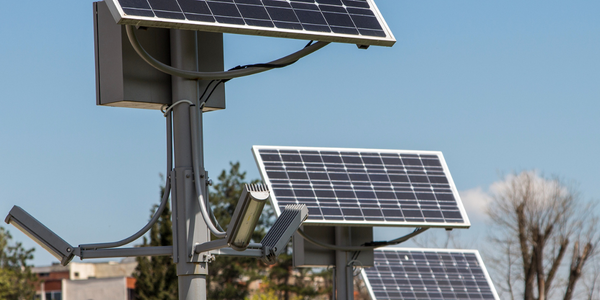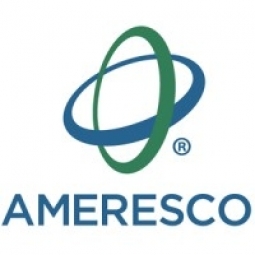Technology Category
- Sensors - GPS
- Sensors - Utility Meters
Applicable Industries
- Education
- Renewable Energy
Applicable Functions
- Facility Management
- Product Research & Development
Use Cases
- Smart Campus
- Virtual Training
Services
- Training
About The Customer
The customer in this case is Alaska Pacific University (APU), a fully accredited four-year Alaska Native-serving and tribally controlled University. APU provides a world-class, hands-on, culturally responsive educational experience in collaboration with its students, communities, and Tribal partners. The university offers academic programs ranging from certificates to a doctoral program. One of its facilities is the Thomas Training Center, operated by APU Nordic Ski Center. The center, located on a glacier mountaintop south of Anchorage, serves as a hub for Nordic athletic training opportunities during summer months and is a training ground for Winter Olympic athletes and world championship cross country skiing hopefuls.
The Challenge
Alaska Pacific University (APU) was facing challenges with its Thomas Training Center on Eagle Glacier, a world-class training ground for Winter Olympic athletes and world championship cross country skiing hopefuls. The facility, originally built in 1987, was in need of infrastructure upgrades to improve energy efficiency and water conservation. The center, located on a remote glacier mountaintop south of Anchorage, also presented logistical challenges for the transportation of materials from sea level to the mountain apex. The project aimed to reduce the center's energy consumption, improve wastewater treatment, and enhance the overall experience for athletes and staff. The project was also constrained by the need to perform the majority of the work during the summer and fall of 2023.
The Solution
Ameresco, a leading cleantech integrator specializing in energy efficiency and renewable energy, partnered with APU and Olgoonik Construction Services, an Alaska-based Native Corporation, to design and upgrade the existing infrastructure at the Thomas Training Center. The project involved the installation of a new boiler, baseboard heaters, convection heaters, and water heaters. Additionally, the existing 750-gallon water tank was retrofitted with a new 500-gallon tank. The upgrades were designed to reduce the center's energy consumption and improve its wastewater treatment and water conservation efforts. The project also factored in the unique logistical challenges of transporting materials to the remote location, using helicopter deliveries. The construction is expected to be completed in October 2023.
Operational Impact
Quantitative Benefit

Case Study missing?
Start adding your own!
Register with your work email and create a new case study profile for your business.
Related Case Studies.

Case Study
Remote Monitoring & Predictive Maintenance App for a Solar Energy System
The maintenance & tracking of various modules was an overhead for the customer due to the huge labor costs involved. Being an advanced solar solutions provider, they wanted to ensure early detection of issues and provide the best-in-class customer experience. Hence they wanted to automate the whole process.

Case Study
Vestas: Turning Climate into Capital with Big Data
Making wind a reliable source of energy depends greatly on the placement of the wind turbines used to produce electricity. Turbulence is a significant factor as it strains turbine components, making them more likely to fail. Vestas wanted to pinpoint the optimal location for wind turbines to maximize power generation and reduce energy costs.

Case Study
Siemens Wind Power
Wind provides clean, renewable energy. The core concept is simple: wind turbines spin blades to generate power. However, today's systems are anything but simple. Modern wind turbines have blades that sweep a 120 meter circle, cost more than 1 million dollars and generate multiple megawatts of power. Each turbine may include up to 1,000 sensors and actuators – integrating strain gages, bearing monitors and power conditioning technology. The turbine can control blade speed and power generation by altering the blade pitch and power extraction. Controlling the turbine is a sophisticated job requiring many cooperating processors closing high-speed loops and implementing intelligent monitoring and optimization algorithms. But the real challenge is integrating these turbines so that they work together. A wind farm may include hundreds of turbines. They are often installed in difficult-to-access locations at sea. The farm must implement a fundamentally and truly distributed control system. Like all power systems, the goal of the farm is to match generation to load. A farm with hundreds of turbines must optimize that load by balancing the loading and generation across a wide geography. Wind, of course, is dynamic. Almost every picture of a wind farm shows a calm sea and a setting sun. But things get challenging when a storm goes through the wind farm. In a storm, the control system must decide how to take energy out of gusts to generate constant power. It must intelligently balance load across many turbines. And a critical consideration is the loading and potential damage to a half-billion-dollar installed asset. This is no environment for a slow or undependable control system. Reliability and performance are crucial.

Case Study
Remote Monitoring and Control for a Windmill Generator
As concerns over global warming continue to grow, green technologies are becoming increasingly popular. Wind turbine companies provide an excellent alternative to burning fossil fuels by harnessing kinetic energy from the wind and converting it into electricity. A typical wind farm may include over 80 wind turbines so efficient and reliable networks to manage and control these installations are imperative. Each wind turbine includes a generator and a variety of serial components such as a water cooler, high voltage transformer, ultrasonic wind sensors, yaw gear, blade bearing, pitch cylinder, and hub controller. All of these components are controlled by a PLC and communicate with the ground host. Due to the total integration of these devices into an Ethernet network, one of our customers in the wind turbine industry needed a serial-to-Ethernet solution that can operate reliably for years without interruption.

Case Study
Temperature monitoring for vaccine fridges
Dulas wanted a way to improve the reliability of the cold chain, facilitating maintenance and ensuring fewer vaccines are spoiled. Dulas wanted an M2M solution which would enable them to record and report the temperature inside vaccine refrigerators.

Case Study
IoT Powering A New Way to Light Streets with Bifacial Solar Panels
When James Meringer’s commercial contracting business experienced a rapid increase in solar projects, he also saw an opportunity to extend the benefits of solar by using the bifacial solar panels he’d become familiar with in new ways. Bifacial solar panels enable sunlight from both sides of the panel, making it a more efficient harvest of solar power. Seeing the panel’s power, James and his team set out to use the same technology for street lighting. Until now, solar street lights have served as utilitarian solutions that force designers to choose between form and function. The Mira Bella Energy team has changed that.



